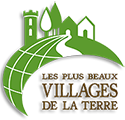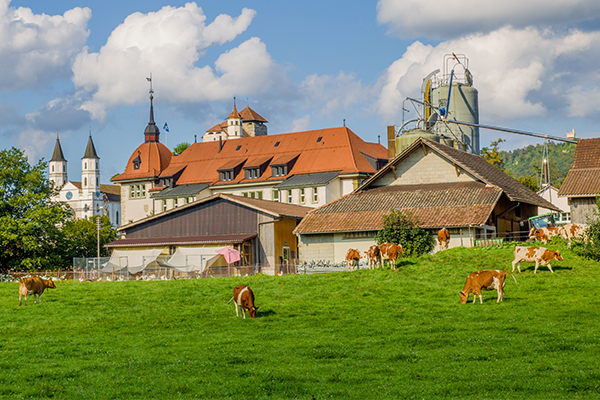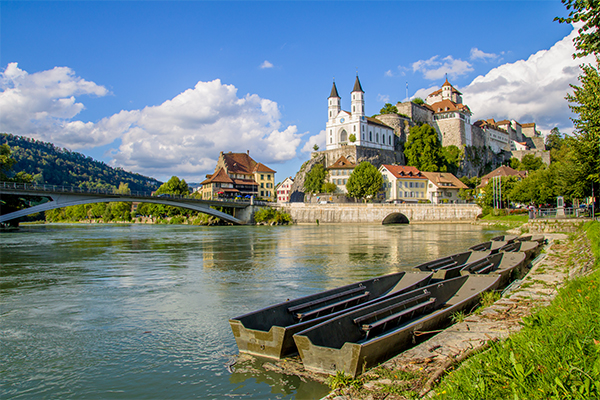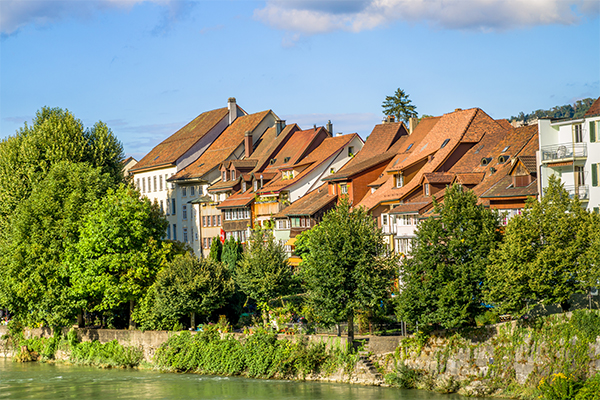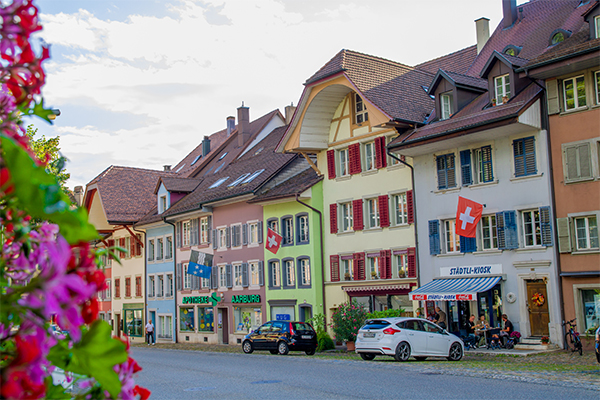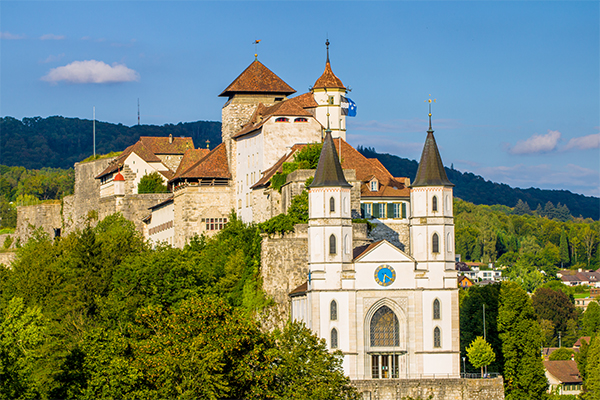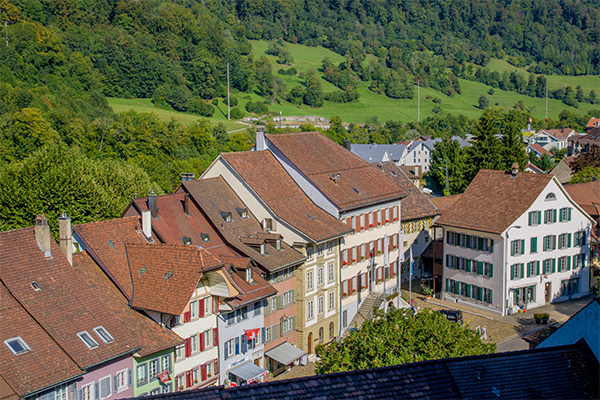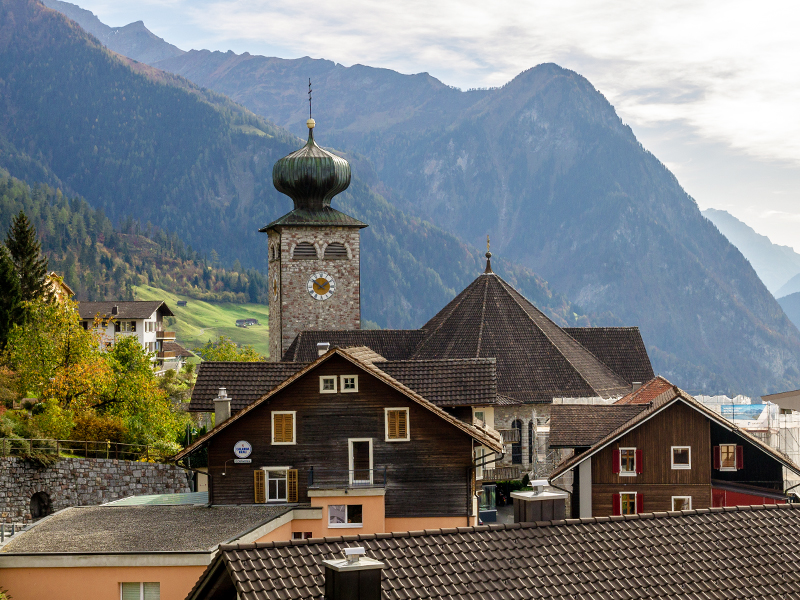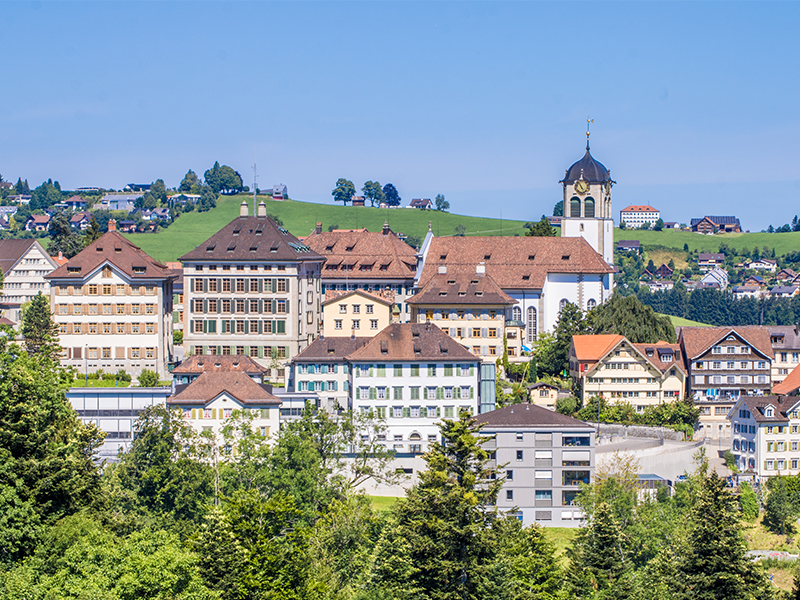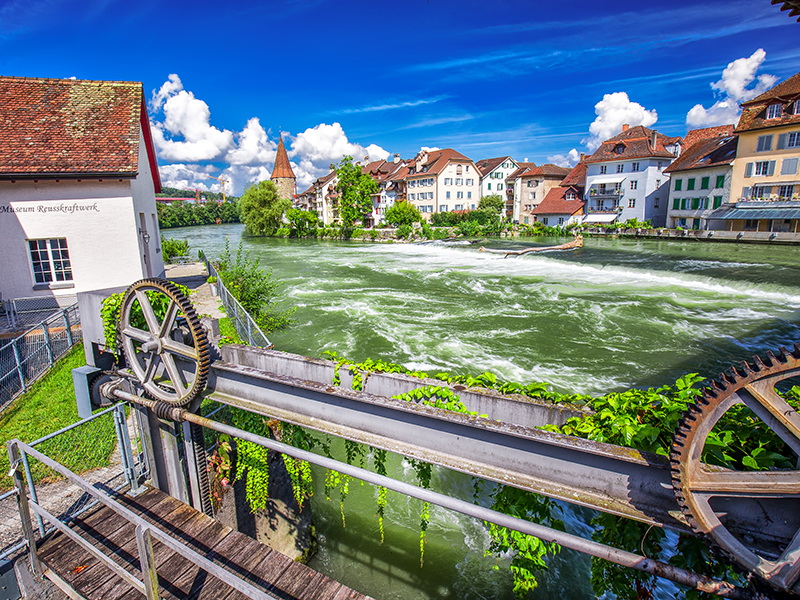Aarburg
With the castle and the fortified walls on top of the hill, the last offshoots of the old town on the banks of the Aare and the church with two bell towers on a hill, the town stands out, visible from afar, in the uniform landscape.
The first written mention of Aarburg dates back to 1123. The Counts of Frohburg ruled here and sold the castle and the city to the Habsburgs in 1299. They enlarged the castle and were driven out by the Bernese in 1415. During the "Bernese period", which lasted until the French invasion under Napoleon in 1798, the castle and the city were extended to its present size. Under Napoleon, the Canton of Aargau was founded, to which Aarburg was also assigned. In 1837 the first wire bridge over the Aare was opened, which was replaced in 1912 by today's Maillard concrete bridge. Between 1839 and 1841 the road through the city was widened and the dam was built. A devastating fire on the night of 3 May 1840 destroyed the row of houses on the mountainside and the church, later rebuilt in the style of the time. For this reason, the triangular Bear Square is now flanked by a row of houses from the Middle Ages and one from the 19th century. Between 1842 and 1845 the present neo-Gothic parish church was built on the rock spur. Since then, the unique view from the west - known above all from the wall calendars - has existed. Until the middle of the 19th century, the most important economic activities for Aarburg were rafting, storage and trade in processed goods such as salt, wine and wood. A natural phenomenon that still exists today has made it easier to moor fins and ships. On a bend to the left, the water of the Aare meets a rock spur. As a result, about half of the water is pushed upstream in a large parasite. This natural spectacle, which is called "Libra" because of its regular level fluctuations, is unique, at least in Europe. After the end of rafting due to the construction of the railway in the mid-19th century, the population of Aarburg lived mainly from the textile industry. The Zimmerli company, which produces the best underwear in the world, still bears witness to this today. Another world-famous company in Aarburg is Franke, which mainly produces kitchens for the catering industry and fully automatic coffee machines. In addition, Aarburg is home to Velux roof windows, Galliker cars, Elco heaters, PEG Papeteristen-Einkaufsgenossenschaft, etc. In addition, the city is home to many commercial enterprises, especially in the auxiliary construction sector. Aarburg is also home to the large Perry Shopping Center with the Coop supermarket and Coop do-it-yourself shop, as well as around fifty other suppliers. A wide range of gastronomy, from simple fast food to gourmet restaurants, invites you to dine and linger. Aarburg is also home to several smaller, mostly family-run hotels and the new Holiday Express Hotel with over eighty rooms. Aarburg is located at the junction of the A1 and A2 motorways with direct exit. By train or bus you can reach the Olten railway junction from Aarburg in five minutes, from where trains leave at short intervals in each direction. Aarburg is also the meeting point of the national cycle paths and allows you to hike along the busy main roads. Not to be underestimated is the local recreation area of Aarburg with the Säli Schlösschen on one side of the valley and the Born with the famous "Tuusiger Stägli" on the other. Aarburg also bears the label "Energy City" and the "Most Beautiful Villages of Switzerland" and is located along the "Mozart's Swiss Route".
Not to be missed
Features
There are no upcoming events.
| Culture |  |
| Landscape |  |
| Gastronomy |  |
